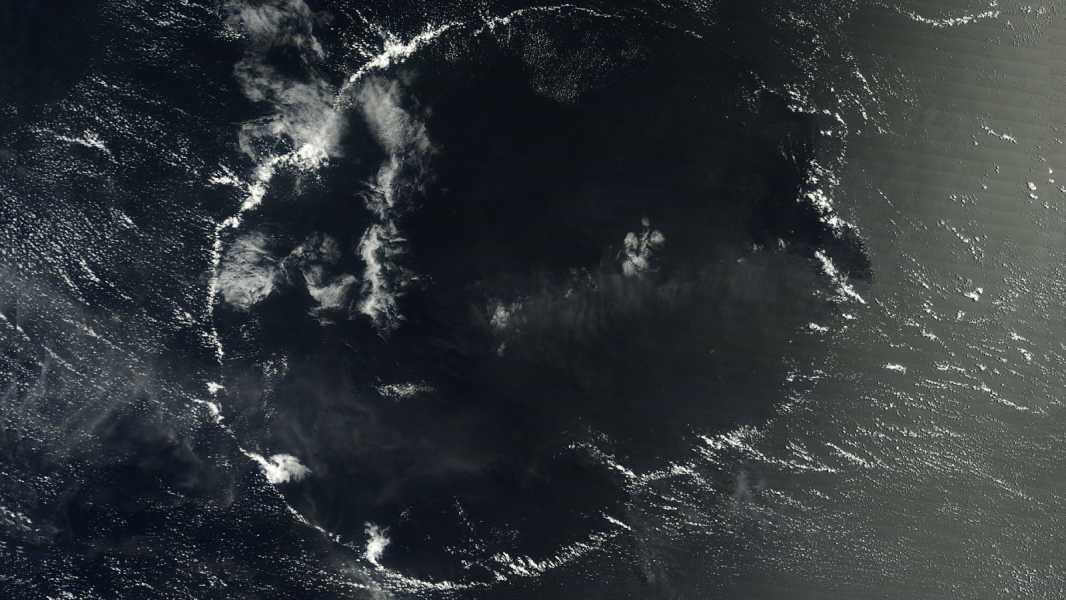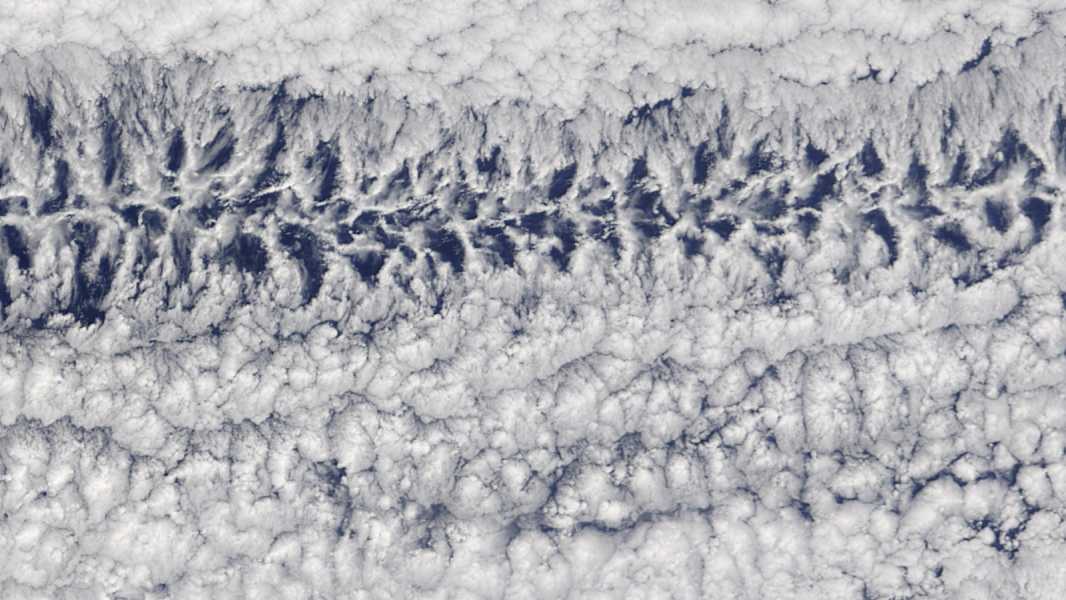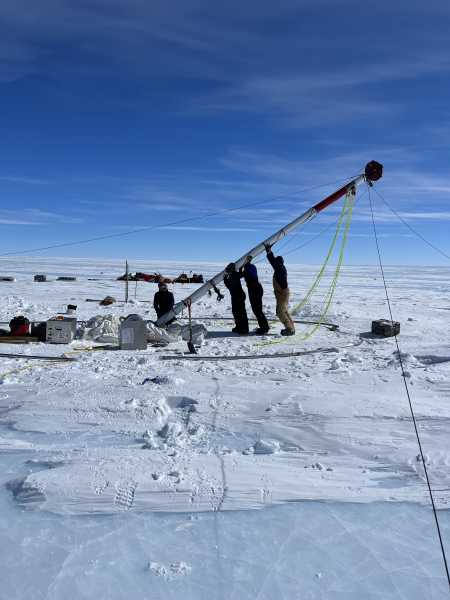
In 2014, a huge, lonely cloud ring with a diameter of about 280 miles was recorded in the central Pacific Ocean. (Image credit: NASA/Terra/MODIS)
This stunning satellite image shows a colossal, near-perfect cloud circle that formed in the heart of the Pacific Ocean more than a decade ago. While such clouds are not uncommon, they are extremely rare to find in isolated and remote locations, experts say.
The unusual structure, approximately 280 miles (450 kilometers) wide, was discovered “several thousand kilometers southwest of Hawaii” by the Moderate Resolution Imaging Spectroradiometer (MODIS) on NASA's Terra satellite, according to NASA's Earth Observatory.
The puffy ring consists of cumulus clouds that have formed a Rayleigh-Benard convection cell, an atmospheric phenomenon involving the rising and falling of air heated or cooled to different temperatures, known as convection.
According to the National Oceanic and Atmospheric Administration (NOAA), there are two types of cloud cells: closed cells, which form when cold air descends at the edges of the cells, causing clouds to form in their centers; and open cells, which form when cold air descends at the center of the cells, causing clouds to form along their edges. The cloud ring in the satellite image was formed by a closed cell.
Cloud cells are typically hexagonal in shape and often appear close to other cells of the same type, creating distinct patterns in the sky. Clouds with open cells often form fine lattices of cells, but for some reason this cell appears to exist alone.

This 2016 satellite image shows a band of open-cell clouds (top) next to a band of closed-cell clouds (bottom). Open cells have voids in the center, while closed cells have voids at the edges.
The lone cloud ring was likely created by a flow of warm air over a small island or body of water that was overheated by the sun, according to the Earth Observatory.
“As the warm air became lighter and rose, cumulus clouds likely formed and eventually produced light rain. The rainwater cooled the air below the clouds, creating a downdraft that pushed the rain-cooled air outward from the clouds' original location,” Earth Observatory said. “When the rain-cooled air intersected with warmer air at the edge of the cell, it likely pushed
Sourse: www.livescience.com





